Apex predators are flesh-eating animals at the top of the food chain. Top predators have no known natural predators and occupy the highest trophic levels. Many types of apex predators date back as far as the Cambrian era when arthropods ruled the seas.
There is much debate about whether humans are considered apex predators. The consensus is that humans evolved as apex predators and dominated for about two million years, consuming primarily meat. Today we have a very diverse palette with many food options.
Discover these 15 types of apex predators and learn about why they dominate their environments.
Burmese Python
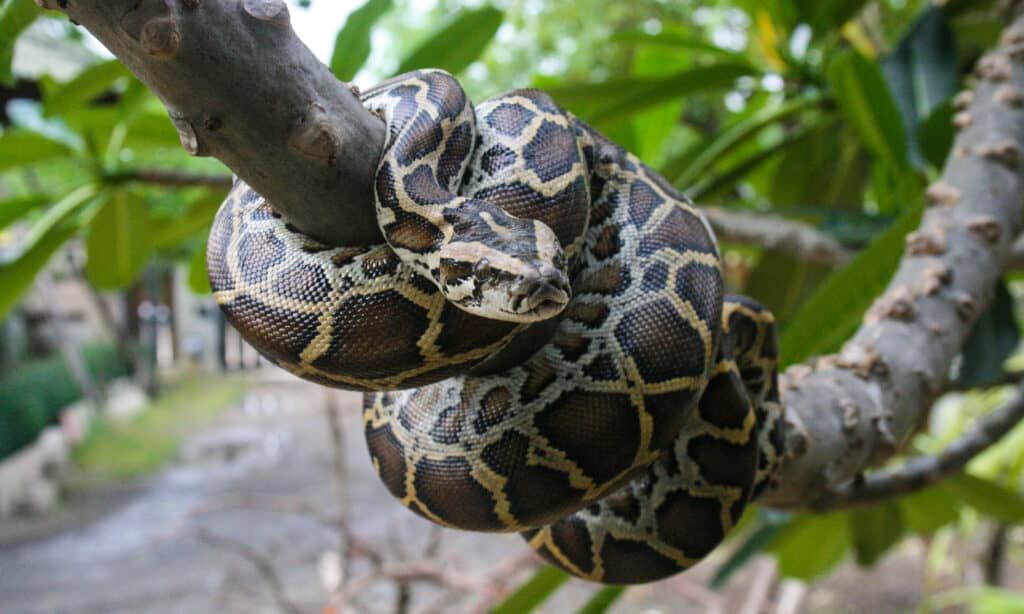
Burmese
pythons are among the largest snakes on Earth.
©iStock.com/Lunatic_67
The Burmese python is one of the largest snakes on earth. It is native to Southeast Asia, where it inhabits many environments, such as grasslands, jungles, marshes, swamps, river valleys, and rocky foothills. This species also inhabits the Florida Everglades, living as an apex predator and eating everything in sight. In their Florida home, they have no natural predators and are considered an invasive species. However, in Asia, they have a few predators, including king cobras and tigers.
Komodo Dragon
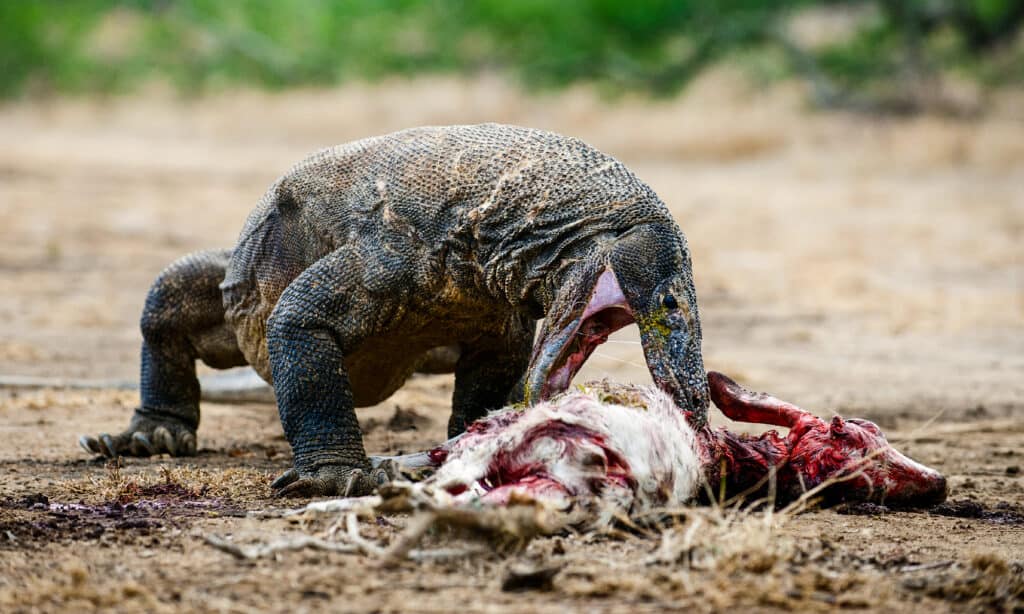
The Komodo dragon eats everything from invertebrates to birds and mammals.
©Sergey Uryadnikov/Shutterstock.com
Komodo dragons are the largest living lizard species in the world. They are endemic to several Indonesian islands, including Komodo, after which they are named. They are apex predators in their environments due to their large size and ambush-hunting style. And they will eat everything from invertebrates to birds and mammals. Their bite is venomous, secreting toxic proteins from glands in their lower jaw.
Giant Petrel
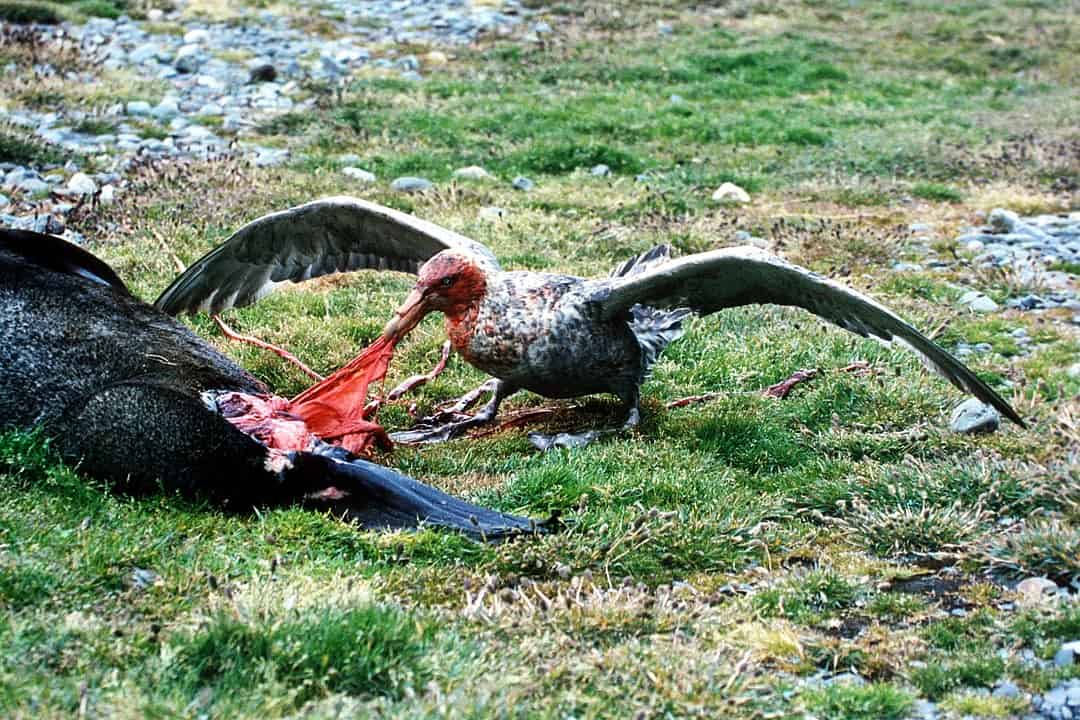
The giant petrel scavenge on carcasses and regularly devour colonies of seals and penguins.
Giant petrels are enormous seabirds that live in the southern hemisphere, as far south as Antarctica. They spend most of their time soaring over water but can also walk on land. Whalers nicknamed them “gluttons” for their ravenous appetite and opportunistic feeding behavior. They scavenge on carcasses and regularly devour colonies of seals and penguins. These birds can get extremely aggressive and will kill other seabirds.
Harpy Eagle
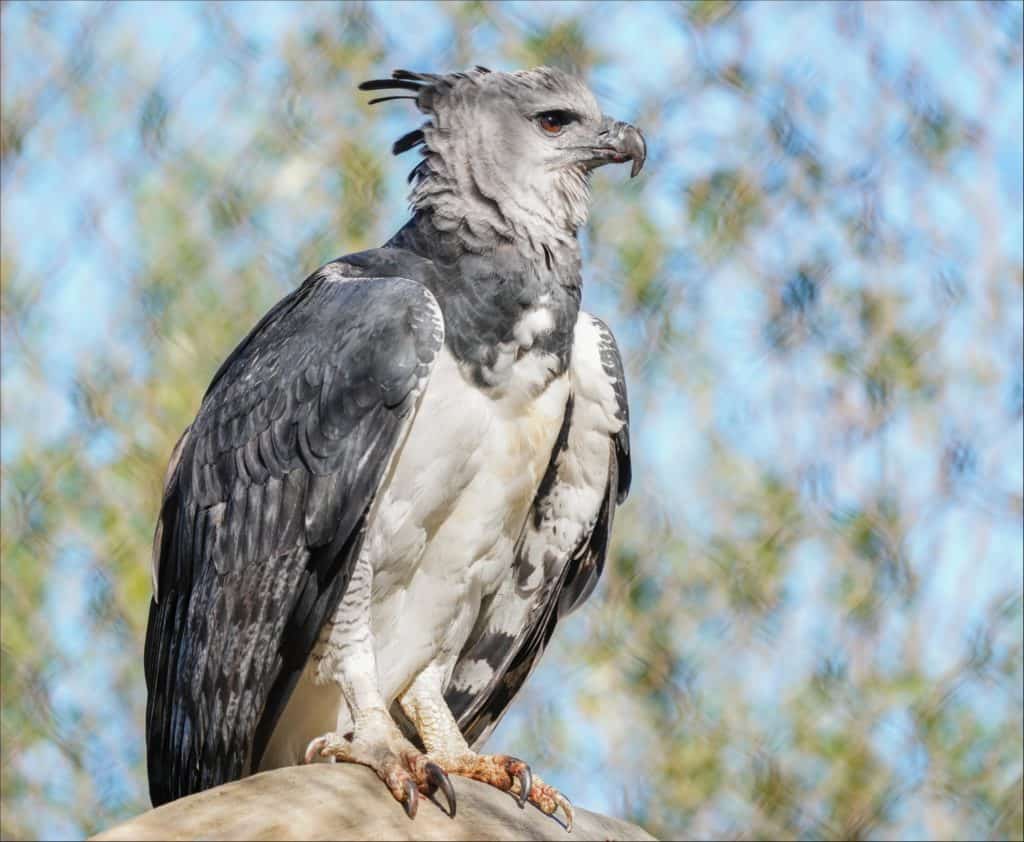
Harpy eagles are one of the largest eagles species alive.
©TIKO IGITYAN/Shutterstock.com
The harpy eagle is native to the lowland tropical rainforests of the neotropics. They are one of the largest eagle species alive and the most powerful within their range. Once they reach adulthood, these eagles are at the top of the food chain. They have exceptionally large talons and can carry up to half of their body weight in prey. This species hunts by waiting patiently on tree branches, soaring over the forest canopy, or chasing other birds.
Jaguar

Jaguars are fearsome predators and will hunt anything from frogs, fish, and reptiles to livestock, cows, and deer.
©GoWildPhotography/Shutterstock.com
Jaguars are strong, compact big cats native to the Americas. As the largest cat in their dense American forest homes, they are easily recognized as apex predators. They are excellent swimmers, hunting in the water and on land. They can also climb trees to reach their prey. The jaguar is a keystone species, meaning it controls herbivorous animal populations. Cougars live alongside jaguars, typically as the smaller species that take on smaller prey.
Leopard Seal

The
leopard seal
only has one predator, the orca.
©cyfer13 / Creative Commons – Original
Leopard seals are the second-largest seal species after the southern elephant seal. They are native to pack ice in Antarctica, where they are apex predators. Their only known predator is the orca. These seals are lean and muscular with massive jaws, which aid in their top-predator status. They have a varied diet, but penguins, in particular, are their favorite. You can find them patrolling the ice edges, waiting for unsuspecting penguins to hop in.
King Cobra
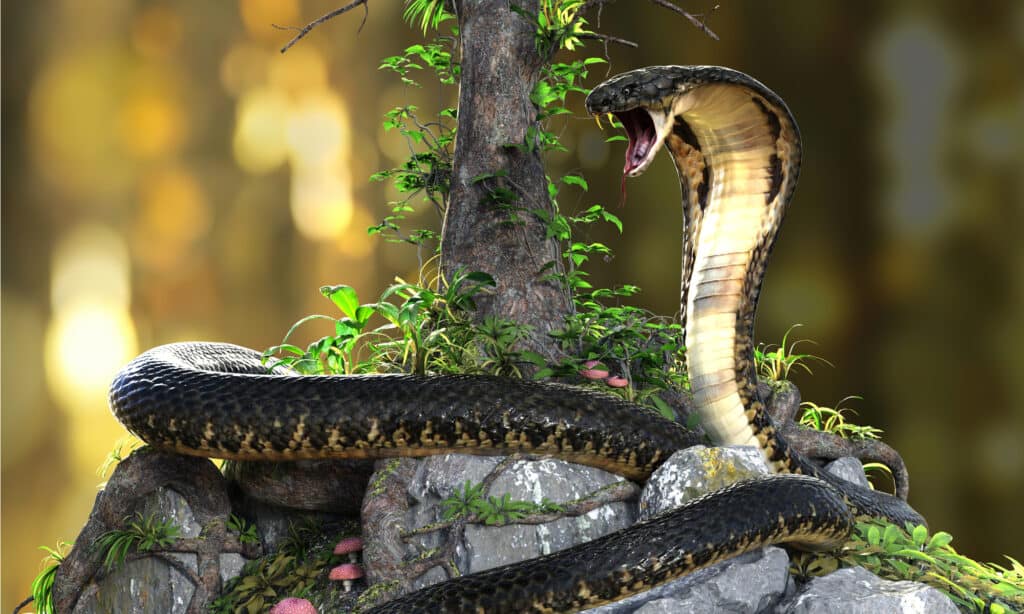
King cobras contain a neurotoxin that can kill its victim within 30 minutes.
©mrjo/Shutterstock.com
The king cobra is the world’s longest highly venomous elapid snake. These impressive snakes are endemic to Southern Asia, where they inhabit forests, mangrove swamps, and bamboo thickets. Their venom contains a neurotoxin that can kill its victim within 30 minutes. They primarily eat other snakes and are even known to cannibalize. They tend to avoid humans when possible, but they will strike if provoked. A king cobra snake bite is a medical emergency.
Grizzly Bear

Grizzly bears have no natural predators and they are one of the largest bears in the world.
©Jack Nevitt/Shutterstock.com
The North American brown bear, also known as the grizzly bear, is one of the largest bears in the world. They are known for their aggressive nature and massive claws. These brown bears have no natural predators, and they eat many animals and plants. They prey on creatures large and small, including moose, deer, bighorn sheep, elk, bison, black bears, fish, birds, and raptor eggs.
Saltwater Crocodile

Saltwater crocodiles can swim up to 18 miles per hour and will strike their prey with surprising agility.
©Firepac/Shutterstock.com
The saltwater crocodile lives in brackish and saltwater habitats from Southeast Asia to Northern Australia. They are the largest living reptiles, with males growing up to 21 feet long and weighing 2,900 pounds. Not only are these giant creatures dangerous to all of the animals in their range, but they also prey on humans. They can swim up to 18 miles per hour and will strike their prey with surprising agility. These crocodiles are even known for taking down sharks that come within their range.
Snow Leopard

Snow leopards silently stalk prey from rocky cliffs and ridges.
©Chris Desborough/Shutterstock.com
Native to Central and Southern Asia’s mountain ranges, the snow leopard is a solitary apex predator that silently stalks rocky cliffs and ridges. They use their steep terrain for momentum, pouncing on their prey and biting their necks. Their diet includes sheep, goats, tahrs, deer, wild boars, and many small mammals. It can kill and eat most animals within its range, except for adult male yaks.
Polar Bear
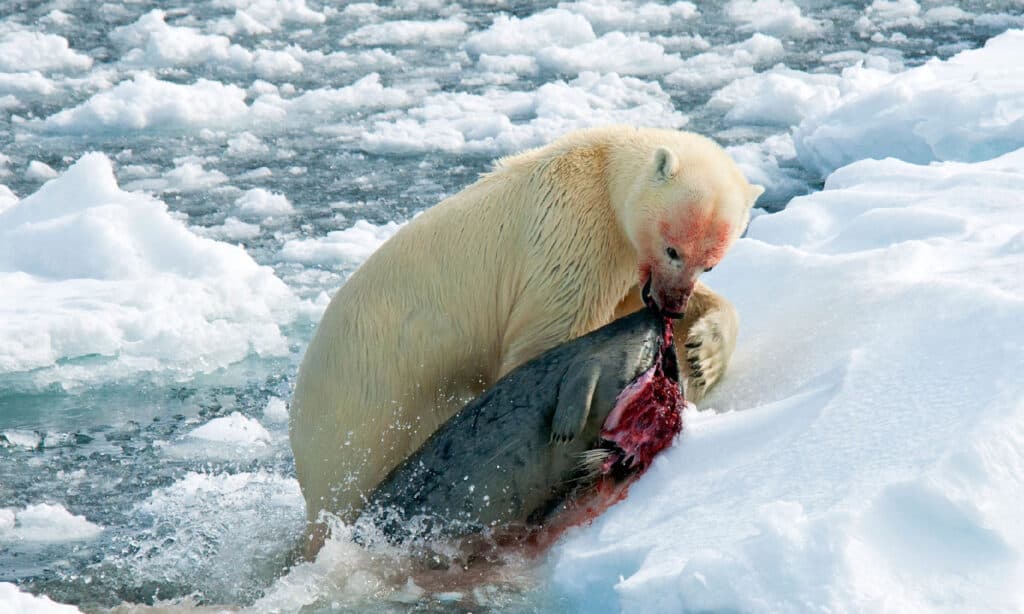
Polar bears usually hunt seals and 70% of their diet is meat.
©iStock.com/AGAMI stock
The polar bear is the largest bear species and land carnivore on earth. They inhabit sea ice within the Arctic Circle but also live on surrounding land masses as far south as Newfoundland. These predators can weigh over 1,500 pounds and feature massive paws and large, jagged teeth. They are hypercarnivorous, meaning more than 70% of their diet consists of meat. Seals are their favorite food, and they wait hours for one to pop up to breathe. Once they do, the polar bear will grab it with its paws, drag it onto the ice, and deliver a crushing bite to its skull.
Lion
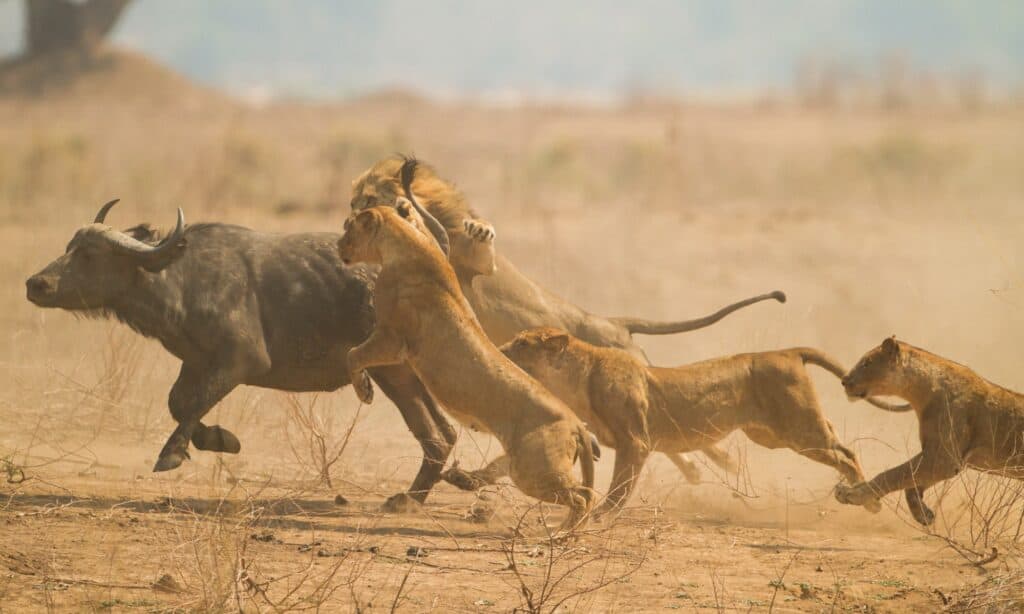
Lions are apex and keystone predators.
©iStock.com/jez_bennett
Lions are probably the most well-known big cat. These animals are at the top of the food chain in their environment. They are native to grasslands, shrublands, and savannas in Africa and India. These cats are apex and keystone predators, actively hunting and scavenging for most animals in their habitat. Some have even been known to actively hunt humans, although this is rare.
Tiger
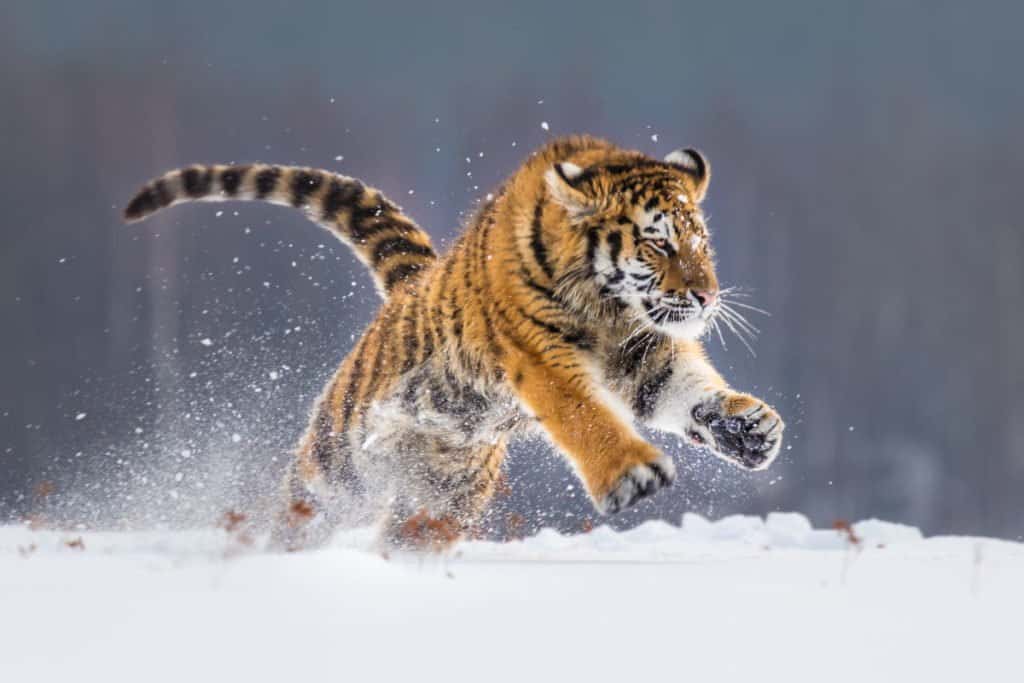
Tigers use their massive teeth to break the spinal cord of their prey.
©Jan Stria/Shutterstock.com
Tigers are the largest cats in the world, with Bengal and Siberian tigers being the biggest. They are apex predators in their natural forested habitats in Southern Asia. Their main prey includes ungulates, like wild boars and deer. They use their massive teeth to break the spinal cord of their prey, often dragging their meal under vegetation to save it for later.
Orca

Orcas have no known predators and often hunt in packs.
The orca, or killer whale, is the largest member of the dolphin family. They are easily recognized by their black-and-white coloring and can be found in all the earth’s oceans. Orcas have no known predators and often hunt in packs, specializing in specific prey. Some may attack marine mammals, while others focus on fish. Some may even hunt baleen whale calves.
Great White Sharks
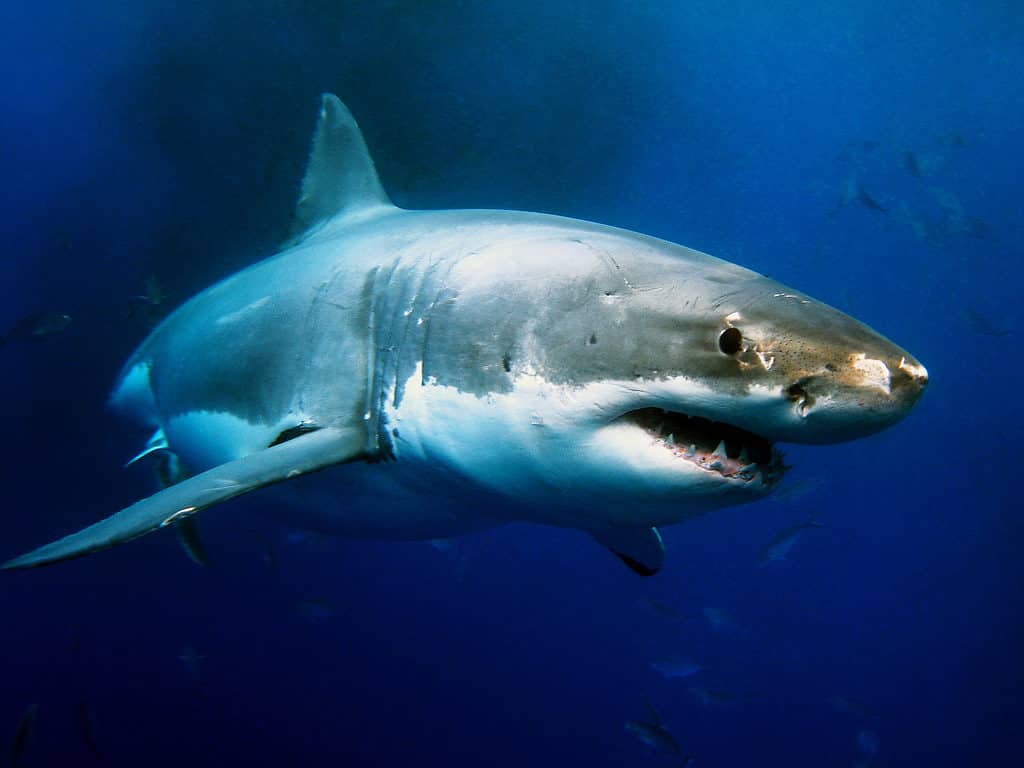
Great white sharks are the ocean’s apex predators.
©iStock.com/Whitepointer
The infamous great white shark stalks the coastal surface waters of all the major oceans. They are enormous mackerel sharks, with the largest on record weighing over 4,400 pounds. These animals have only one occasional predator, the orca. But the great white can hunt and kill animals as big as a large baleen whale. They are also responsible for more human bites than any other shark species.
The photo featured at the top of this post is © nattanan726/Shutterstock.com
Thank you for reading! Have some feedback for us? Contact the AZ Animals editorial team.







